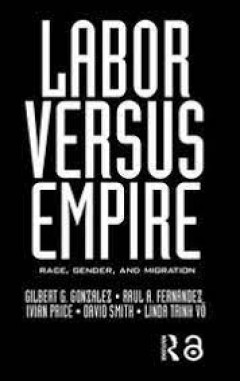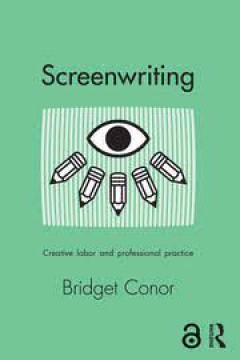Filter by

Labor Versus Empire: Race, Gender, Migration
The essays in this collection address issues significant to labor within regional, national and international contexts. Themes of the chapters will focus on managed labor migration; organizing in multi-ethnic and multi-national contexts; global economics and labor; global economics and inequality; gender and labor; racism and globalization; regional trade agreements and labor.
- Edition
- 1st Edition
- ISBN/ISSN
- 9780203327180
- Collation
- -
- Series Title
- -
- Call Number
- -

Politics, Religion and Gender: Framing and Regulating the Veil
Heated debates about Muslim women's veiling practices have regularly attracted the attention of European policymakers over the last decade. The headscarf has been both vehemently contested by national and/or regional governments, political parties and public intellectuals and passionately defended by veil wearing women and their supporters. Systematically applying a comparative perspective, thi…
- Edition
- 1st Edition
- ISBN/ISSN
- 9780203181058
- Collation
- -
- Series Title
- -
- Call Number
- -

Princely India Re-imagined: A Historical Anthropology of Mysore from 1799 to …
India’s Princely States covered nearly 40 per cent of the Indian subcontinent at the time of Indian independence, and they collapsed after the departure of the British. This book provides a chronological analysis of the Princely State in colonial times and its post-colonial legacies. Focusing on one of the largest and most important of these states, the Princely State of Mysore, it offers a n…
- Edition
- 1st Edition
- ISBN/ISSN
- 9780203102251
- Collation
- -
- Series Title
- -
- Call Number
- -

Sufism in the West
With the increasing Muslim diaspora in post-modern Western societies, Sufism – intellectually as well as sociologically – may eventually become Islam itself due to its versatile potential. Although Sufism has always provoked considerable interest in the West, no volume has so far been written which discusses this aspect of Islam in terms of how it is practised in Western societies. Bring…
- Edition
- -
- ISBN/ISSN
- 9780203087206
- Collation
- -
- Series Title
- -
- Call Number
- -

Morality and Nationalism
This book takes a unique approach to explore the moral foundations of nationalism. Drawing on nationalist writings and examining almost 200 years of nationalism in Ireland and Quebec, the author develops a theory of nationalism based on its role in representation. The study of nationalism has tended towards the construction of dichotomies – arguing, for example, that there are political…
- Edition
- 1st Edition
- ISBN/ISSN
- 9780203086179
- Collation
- -
- Series Title
- -
- Call Number
- -

Screenwriting: Creative Labor and Professional Practice
Screenwriting: Creative Labor and Professional Practice analyzes the histories, practices, identities and subjects which form and shape the daily working lives of screenwriters. Author Bridget Conor considers the ways in which contemporary screenwriters navigate and make sense of the labor markets in which they are immersed. Chapters explore areas including: Screenwriting histories and…
- Edition
- 1st Edition
- ISBN/ISSN
- 9780203080771
- Collation
- -
- Series Title
- -
- Call Number
- -

Media and New Religions in Japan
The Open Access version of this book, available at www.taylorfrancis.com/books/9781135117849, has been made available under a Creative Commons Attribution-Non Commercial-No Derivative 4.0 license. Japanese "new religions" (shinshūkyō) have used various media forms for training, communicating with members, presenting their messages, reinforcing or protecting the image of the leader, and, pote…
- Edition
- 1st Edition
- ISBN/ISSN
- 9780203075036
- Collation
- -
- Series Title
- -
- Call Number
- -

The Collapse of Communist Power in Poland: Strategic Misperceptions and Unant…
Based on extensive original research, including interviews with key participants, this book investigates the sudden and unforeseen collapse of communist power in Poland in 1989. It sets out the sequence of events, and examines the strategies of the various political groupings prior to the partially free election of June 1989. This volume argues that the specific negotiating strategies adopte…
- Edition
- -
- ISBN/ISSN
- 9780203027769
- Collation
- -
- Series Title
- -
- Call Number
- -

Embracing New Perspectives in History, Social Sciences, and Education
This book provides a collection of articles resulting from the International Conference on History, Social Sciences, and Education (ICHSE), which was held on 11 September 2021. The Department of History of Malang State University choose "Embracing New Perspectives in History, Social Sciences, and Education" as the main topic, and elaborates on five subthemes: 1) new trends in historical researc…
- Edition
- -
- ISBN/ISSN
- 9781003295273
- Collation
- -
- Series Title
- -
- Call Number
- -

The Routledge Companion to Global Renaissance Art
This companion examines the global Renaissance through object-based case studies of artistic production from Africa, Asia, the Americas, and Europe in the early modern period. The international group of contributors take an art historical approach characterized by close analysis of form and meaning as well as function, and a focus on questions of crosscultural dialogue and adaptation. Seekin…
- Edition
- -
- ISBN/ISSN
- 9781003294986
- Collation
- -
- Series Title
- -
- Call Number
- -
 Computer Science, Information & General Works
Computer Science, Information & General Works  Philosophy & Psychology
Philosophy & Psychology  Religion
Religion  Social Sciences
Social Sciences  Language
Language  Pure Science
Pure Science  Applied Sciences
Applied Sciences  Art & Recreation
Art & Recreation  Literature
Literature  History & Geography
History & Geography